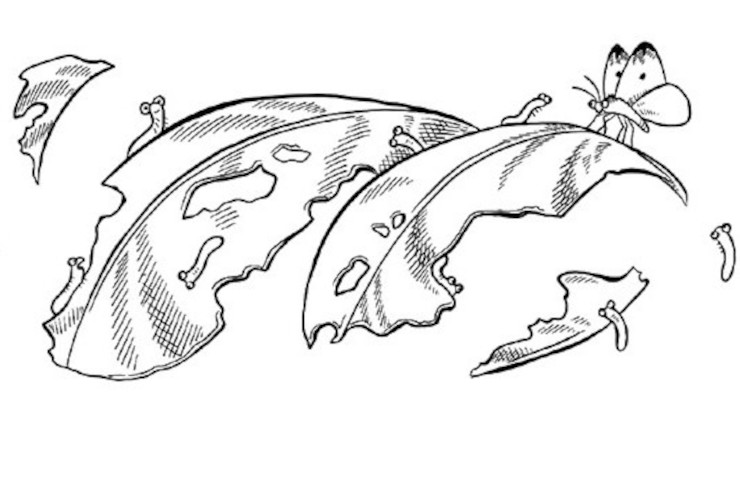
Farmer Palmer
This is the tale of a cabbage worm moth. If you have members of the cabbage family growing in your garden, there’s a good chance cabbage worms will find and destroy your vegetables. And when I say destroy, I mean they will eat your kale, your cabbage, your broccoli, and so on until there is nothing left but a big hole where your delicious future dinner used to be.
If we’re lucky, we can spot the cabbage worm moth early on and take steps to minimize any destruction. The problem is that these suckers have excellent camouflage. So even if you find them, there are probably zillions more lurking underneath the bottom leaves of your favorite garden veggies.
Still, it’s better to know what we’re up against, right? You can’t spray neem oil on an enemy you don’t even know is there! That’s exactly the situation in today’s poem, Farmer Palmer, that comes to us from Carl “Papa” Palmer.
Farmer Palmer was overjoyed as his first raised-bed garden began to take shape in Spring. His garden included “cherry tomatoes, carrots, radishes, leeks, red cabbage along with cilantro, chives, and oregano.”
And then the unthinkable happened: “Holes suddenly appear in my cabbage leaves.” Yikes! We’ve all been there. But what did Farmer Palmer do? That, my friends, is a funny story.
Where Else Will You Find a Poem About a Cabbage Worm Moth? GreenPrints Has That and So Much More!
This story comes from our archive spanning over 30 years, and includes more than 130 magazine issues of GreenPrints. Pieces like these that imbue the joy of gardening into everyday life lessons always brighten up my day, and I hope it does for you as well. Enjoy!

Farmer Palmer
By Carl “Papa” Palmer
Tommy Toe cherry tomatoes,
carrots, radishes, leeks, red cabbage
along with cilantro, chives, and oregano
attract flocks of lovely white butterflies
to my first raised-bed garden.
Holes suddenly appear in my cabbage leaves
with tiny shiny green hairless caterpillars
feasting upon the crop in front of my eyes.
The seasoned gardener at the local nursery
replies, “Cabbage worms,” asks if I’d noticed
any white waxy wing moths, explaining further
they lay eggs that hatch in a day and eat
constantly until three inches long or when
food sources are gone, whichever comes first.
Noticing my shocked expression, he replies,
“The butterflies were quite pretty, weren’t they?” ❖

By Carl “Papa” Palmer of University Place, WA, published originally in 2019, in GreenPrints Issue #118. Illustrated by Hannah England

Do you have a favorite garden poem about an unexpected garden pest? Or have you written one yourself?



